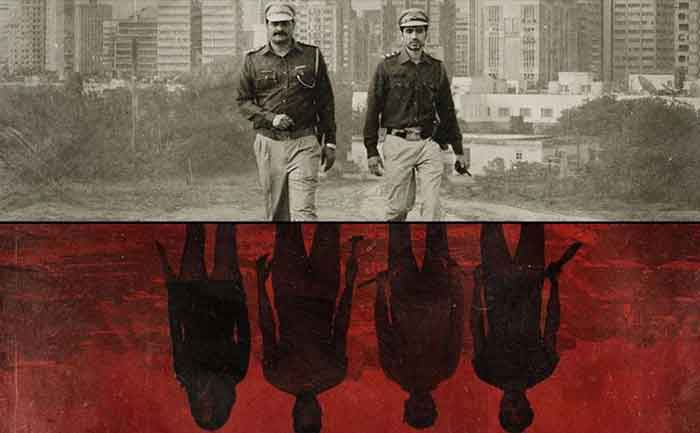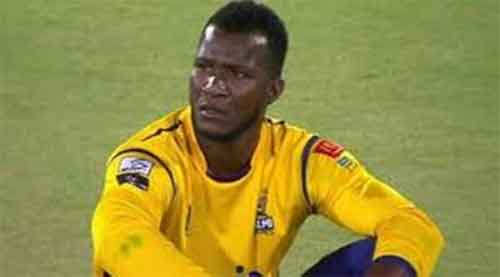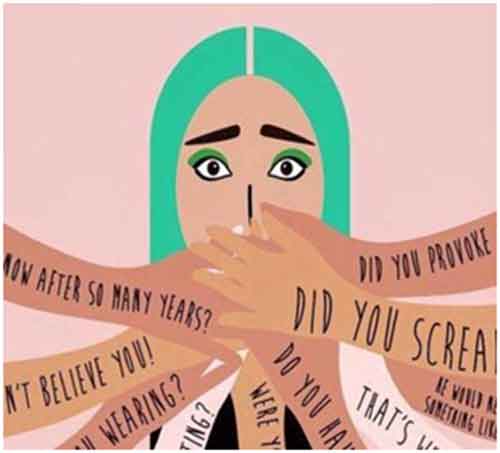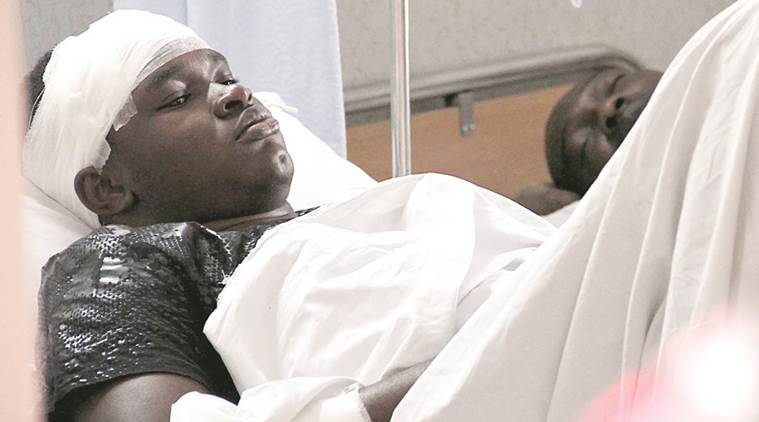
On 2nd January 2020, India Today published news with the title “Haryana: Sisters denied passports because they “looked Nepali’” in which two sisters were denied a passport and wrote on their documents that “applicants seem to be Nepali”[1]. Not much of havoc had been seen in social media as it has become a common practice of considering Nepali as an outsider in India. But the recent case of sexist slur against Nepali women in Amazon’s web series “Paatal Lok” created a huge resentment among Nepali speaking community in India and have demanded to “mute the slur, blur the subtitles and uploaded edited video along with an unconditional apology and a disclaimer.[2]
This act of maligning certain category of people based on their physical and racial characteristic by popular media house has created an atmosphere of widespread threat and fear not just against Nepali community but to all those Mongolian looking communities from Northeast India. Named as Mary Lyngdoh, which is a very common surname among Khasi from Meghalaya, the character throughout the entire show (consisting of total 9 episodes) is explicitly shown to be easy victims of a sexual and racial slur. The series in their blind ignorance or lack of knowledge, explicitly portray how susceptible is such Mongolian looking girls in India-perhaps in the later part of the show, the character is named as “Cheeni” because “she looks like Chinese”.
It also shows how easily they could become the victim of rape, racial stigma and prejudice by their look in the eyes of larger mainstream Indian society. Paradoxically, this series came in the wake of ongoing COVID 19 crisis where many racial attacks against North-eastern people has been reported in major cities of India. This profiling of Mongolian looking individual as a target of racial and sexual threat in Indian Media House have a larger impact in society as it disseminates such stereotype faster than one assume.
Since, it is not the first time that such stigma of Nepali as “outsider” is explicitly produced by a big Media house. Perhaps, several Bollywood movies, commercial ads, individuals in India had made such comments either deliberately or accidentally. When a Nepali speaking lad Prashant Tamang from Darjeeling has crowned the title of Indian Television reality show Indian Idol in 2007, the R J Jonathan Brady, popularly known as Nitin made a racial slur against him in a live broadcast where he said: “shopkeepers will not have to their own security arrangements as Gorkha have taken to singing”. However, it sparked off a huge protest in Darjeeling Hills which eventually turned into a mass movement for Gorkhaland under the leadership of Bimal Gurung.
Despite such protest and struggle to claim their recognition as Indian, there arise a repeated ignorant by Indian Media House about the existence of Nepali in India. The answer is simple because they look different. The common racial phraseology often heard in Indian cities, medias and popular culture is that “they look like a Nepali…. they look like a Chinese…” So much so that people from Northeast are even called “Corona” during ongoing COVID 19 pandemic. So, why does look matter so much to assert one’s identity and citizenship in India? Why are Mongolian look individual in India often referred to as from Nepal or China?
One of the basic problems in mainstream Indian society is the profiling of individual or community by their look and judge them through their narrow view of Indian nationalism centred around religion (Hindu vs Muslim) Language (Hindi) and caste (Brahmin vs Dalit), that apparently results in the othering of marginalised communities such as Tribal, Adivasi, Christians, Buddhists, Non-Hindi etc. This further created a regional imagination of Indian nationalism in which India beyond Kolkata does not feature in its map. The history of West Bengal and its historian can never accept the fact that the northern part of the state is substantially occupied by the Nepali speaking community ever since it was made a part of India. Thus, more than everyday practices of racial stigma, it is an intellectual and institutional misrepresentation of the history of community, region and identity that perpetually reproduce racial segregation in India.
It is through this craft of knowledge production discursively dominated by a narrow nationalist ideology that creates distinction based on physical outlook. In the case of objectification of Nepali women as a “prostitute” in Amazon’s web series, it is this institutional misrepresentation of the history of the Nepali community in India that has constantly labelled them as from Nepal. Because labelling someone from Nepal would help them sustain their invalid thesis that “Nepali women are prostitute” and that’s what the “Paatal Lok” in Amazon Prime Video have tried to depict. This insult to certain community without knowing their history is a blatant reproduction of ignorant history.
Between Gorkha and Nepali: A Citizenship Crisis in India
A brief outline of being Nepali in India might serve the interest of those who often have such misunderstanding. The Nepali speaking population in India have always faced a crisis of identity and citizenship and many efforts were made to assert their Indian identity. From the Nepali language movement to the Gorkhaland movement, the assertion of being Nepali in India was an ultimate demand. Darjeeling, a district in North Bengal was an epicentre for such struggles not only because of concentrated Nepali speaker but also because of its contested history. After the Anglo Gurkha war (1814-1816), the British took a keen interest in developing colonial hill station in Darjeeling Hills which according to the treaty was to be restored to the Rajah of Sikkim. As the British determined to annex Darjeeling grew stronger, the British involved in some dubious act with the Rajah of Sikkim which eventually resulted in the annexation of Darjeeling from Sikkim in 1835. Since, then Darjeeling was made a part of British India and remained under West Bengal jurisdiction after independence. This enthuses many oral narratives to proclaim that “we came with our land” and hence cannot be considered as an outsider.
However, identity crisis if being Nepali in India continue in the new nation-state of India and was further aggravated by Indo-Nepal treaty of Peace and Friendship (1950) that allows free movement of goods and people between two people. Towards the decades of 1960s, the movement to recognised Nepali as a scheduled language of India was started by prominent literary figures, leaders and politicians across India. It spread for over four decades and finally in Nepali along with Manipuri and Konkani was finally recognised as schedule language under the VIII schedule of the Indian Constitution. However, in between that, the identity question of Nepali took a new dimension when the demand for Gorkhaland was raised by Subash Ghising and his party Gorkha National Liberation Front (GNLF) during the 1980s. This movement for Gorkhaland that turned violent greatly shaped the identity questions of being Nepali in India as Ghising judiciously emphasised the terms “Gorkha” as being bona fide citizenship of India in contrast to “Nepalis” as being a citizen of Nepal.
This political distinction between Gorkhas and Nepalis during the Gorkhaland movement greatly helped Ghising to legitimize his demand for Gorkhaland in India. He further demanded the abrogation of article 7 of the Indo-Nepal treaty that states that “the Governments of India and Nepal agree to grant, on reciprocal basis, to the nationals of one country in the territories o the other the same privileges in the matter of residence, ownership of property, participation in trade and commerce, movement and other privileges of a similar nature”. This Ghising and his Party believed is the main reason behind treating Indian Gorkhas as a refugee in India and demanded the recognition of citizenship right of the Indian Gorkhas. He was also in favour of using “Gorkha bhasa” in place of “Nepali” but it remained as a political gimmick only.
Although the demand for Gorkhaland movement failed to achieve separate statehood for the Indian Gorkhas, it provided a new definition of being Gorkhas in India. The “Gorkhas” a politically constructed post-colonial identity for Nepali speakers in India have higher potential to re-claim recognition in India. However, Gorkhas and Nepalis are often used synonymously in most of the cases as it is culturally and linguistically embedded in the social fabric of the community. Thus, any insult to the Nepali community will hurt the sentiment of larger Gorkha identity in India. The recent use of derogatory words in Indian web series has triggered many Gorkha based association, individuals, lawyers etc, in India to challenge such act of defaming certain community without acknowledging their history.
[1] https://www.indiatoday.in/india/story/haryana-sisters-refused-passports-on-grounds-of-appearance-1633181-2020-01-02 last accessed on 19th May 2020.
[2] https://www.thehindu.com/entertainment/gorkhas-demand-amazons-paatal-lok-drop-sexist-slur/article31618858.ece
Sangay Tamang is a Senior Research Scholar at the Department of Humanities and Social Sciences, Indian Institute of Technology Guwahati. He can be reach at [email protected]
SIGN UP FOR COUNTERCURRENTS DAILY NEWS LETTER

















































